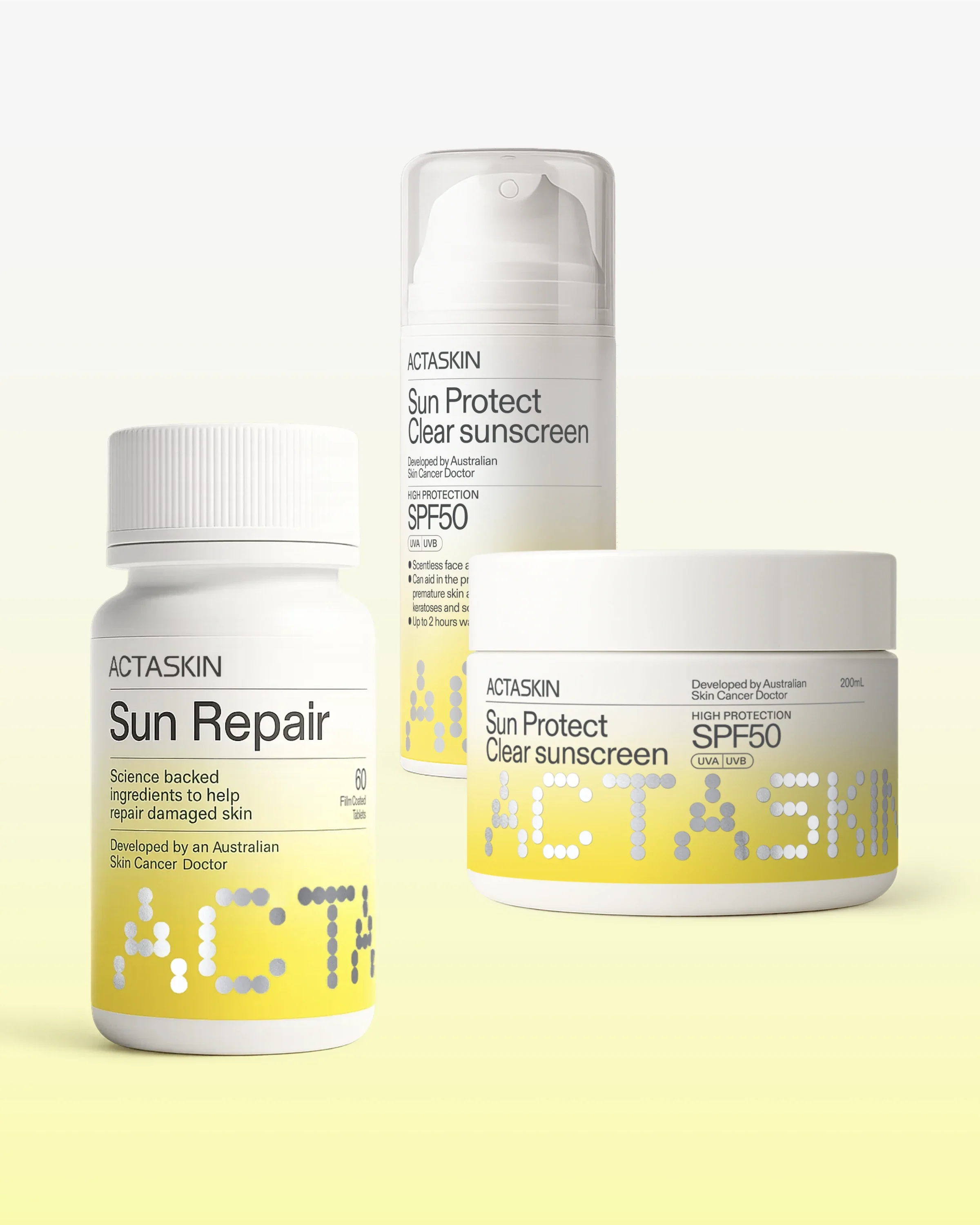Many sunscreens are packed with trendy "extras" like vitamin C, vitamin E, and niacinamide to make big skin benefit promises. But when you actually examine the science, those ingredients are often included at concentrations too low to deliver real skin benefits. It looks good on a label but it does little for your skin.
We believe sunscreen should do one thing exceptionally well: protect you from UV damage. That means prioritising proven UV filters, not crowding the formula with underpowered add-ons. Here’s why you will not find these popular "extras" in our sunscreen, and what the science really says about them:
The Bottom Line
Ingredients like vitamin E, vitamin C, and niacinamide are renowned for their skin-enhancing properties. However, in many sunscreen formulations, these are present in concentrations too low to deliver meaningful results. Brands may incorporate these additives to suggest a superior product, but the science doesn't always support these claims. We believe in focusing on sunscreens with robust UV filters and recommend dedicated serums for delivering these active ingredients at effective doses.
Why we dont use these ingredients
Vitamin E
Vitamin E (tocopherol or tocopheryl acetate) is a widely used antioxidant in skincare products, particularly in sunscreens and anti-aging formulations. It plays a role in protecting skin from oxidative stress, environmental damage, and supporting skin barrier function.
Concentration Challenges in Sunscreens:
Many commercial sunscreen formulations contain vitamin E at concentrations of 0.1% to 0.5%, primarily as a preservative or stabilising agent rather than as a functional active ingredient. However, studies show that meaningful UV protective effects from Vitamin E have been demonstrated mainly at concentrations between 2–5%, far higher than what is typically used in sunscreens (<1%).
demonstrating significant antioxidant and skin-protective effects often use concentrations closer to 2% to 5%. This discrepancy arises because:
- Formulation Complexity: Higher concentrations of vitamin E can destabilise formulations, making sunscreens feel greasy or heavy.
- Prioritising UV Filters: Formulators often need to prioritise SPF agents over antioxidant concentrations for UV protection.
- Stability Challenges: While Vitamin E works well with vitamin C in serums, maintaining their combined stability in sunscreen formulations is challenging.
Vitamin C
Vitamin C (commonly in the form of ascorbic acid, sodium ascorbyl phosphate, or magnesium ascorbyl phosphate) is a powerful antioxidant widely used in skincare for its brightening, anti-aging, and protective benefits.
Concentration Challenges in Sunscreens:
Effective antioxidant and skin-protective effects are typically observed with vitamin C concentrations between 10% and 20%. However, most commercial sunscreen formulations include vitamin C at much lower concentrations (often 0.5% to 2%) due to several factors:
- Shorter shelf life: Higher concentrations increase the risk of oxidation, reducing shelf life of sunscreen.
- Stability risks: Vitamin C is highly unstable in sunscreens, breaking down when exposed to light and oxygen. Without proper stabilisation, such as with ferulic acid or vitamin E, it loses its effectiveness, which is why high-dose serums are a better option.
- Irritation Concerns: Since sunscreen is designed for frequent and generous application, including high concentrations of vitamin C heightens irritation risks.
Niacinamide
Niacinamide (also known as nicotinamide) is a water-soluble ingredient widely used in skincare for its multiple benefits in improving skin barrier function, reducing inflammation, and enhancing overall skin health. Check out Actaskin’s Sun Repair supplement to learn more about the benefits of high dose nicotinamide on the skin.
Concentration Challenges in Sunscreens:
Studies demonstrating niacinamide’s strongest benefits typically use concentrations between 4% to 6%. However, most commercial sunscreen formulations include niacinamide at lower levels (often 1% to 2%) due to:
- Formulation Complexity: Sunscreens require a precise balance of UV filters, stabilisers, and emollients; adding high niacinamide concentrations can disrupt this balance.
- Potential for Sensory Issues: Higher doses may alter the sunscreen’s texture, making it feel sticky or heavy.
- Irritation Risk: Since sunscreen is designed for frequent and liberal application, formulators often keep niacinamide levels low to minimise the risk of irritation in sensitive skin types.
This article is intended for educational purposes only and does not constitute medical advice. Always consult a healthcare professional for your skincare needs.





